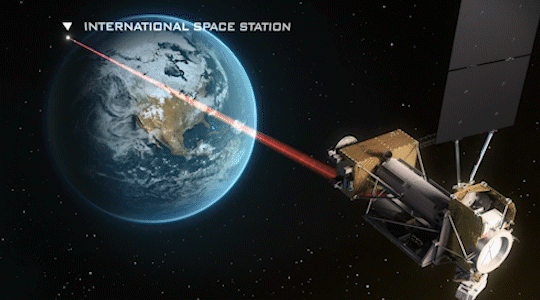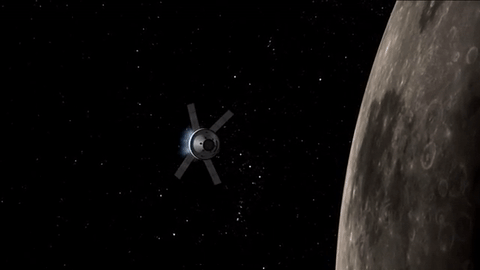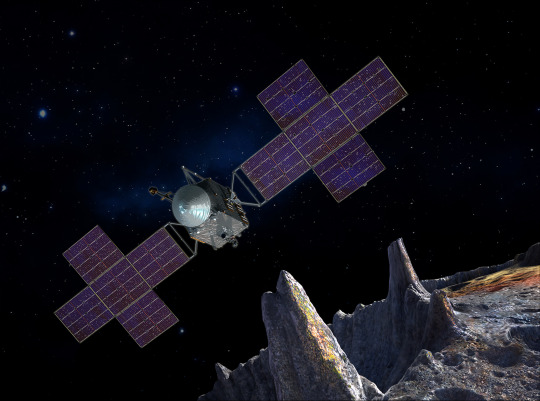
When we return to the Moon, much will seem unchanged since
humans first arrived in 1969. The flags placed by Apollo
astronauts will be untouched by any breeze. The footprints left by man’s “small
step” on its surface will still be visible across the Moon’s dusty landscape.
Our next generation of lunar explorers will require
pioneering innovation alongside proven communications technologies. We’re
developing groundbreaking technologies to help these astronauts fulfill their
missions.
In space communications networks, lasers will supplement
traditional radio communications, providing an advancement these explorers
require. The technology, called optical communications, has been in development
by our engineers over decades.

Optical
communications, in infrared, has a higher frequency than radio,
allowing more data to be encoded into each transmission. Optical communications
systems also have reduced size, weight and power requirements. A smaller system
leaves more room for science instruments; a weight reduction can mean a less
expensive launch, and reduced power allows batteries to last longer.

On the path through this “Decade of Light,” where laser
joins radio to enable mission success, we must test and demonstrate a number of
optical communications innovations.

The Laser Communications Relay Demonstration
(LCRD) mission will send data between ground stations in Hawaii and California
through a spacecraft in an orbit stationary relative to Earth’s rotation. The
demo will be an important first step in developing next-generation Earth-relay
satellites that can support instruments generating too much data for today’s
networks to handle.

The Integrated LCRD Low-Earth Orbit User Modem
and Amplifier-Terminal will provide the International
Space Station with a fully operational optical communications
system. It will communicate data from the space station to the ground through
LCRD. The mission applies technologies from previous optical communications
missions for practical use in human spaceflight.

In deep space, we’re working to prove laser technologies
with our Deep Space
Optical Communications mission. A laser’s wavelength is smaller than
radio, leaving less margin for error in pointing back at Earth from very, very
far away. Additionally, as the time it takes for data to reach Earth increases,
satellites need to point ahead to make sure the beam reaches the right spot at
the right time. The Deep Space Optical Communications mission will ensure that
our communications engineers can meet those challenges head-on.

An integral part of our journey back to the Moon will be our
Orion
spacecraft. It looks remarkably similar to the Apollo capsule, yet it
hosts cutting-edge technologies. NASA’s Laser Enhanced Mission Communications
Navigation and Operational Services (LEMNOS) will provide Orion with data rates
as much as 100 times higher than current systems.
LEMNOS’s optical terminal, the Orion EM-2 Optical
Communications System, will enable live, 4K ultra-high-definition video from
the Moon. By comparison, early Apollo cameras filmed only 10 frames per second
in grainy black-and-white. Optical communications will provide a “giant leap”
in communications technology, joining radio for NASA’s return to the Moon and the
journey beyond.

NASA’s Space
Communications and Navigation program office provides strategic oversight to optical
communications research. At NASA’s Goddard Space Flight Center in Greenbelt,
Maryland, the Exploration and Space Communications projects division is guiding
a number of optical communications technologies from infancy to fruition. If
you’re ever near Goddard, stop by our visitor center to check out our new
optical communications exhibit. For more information, visit nasa.gov/SCaN
and esc.gsfc.nasa.gov.





Комментариев нет:
Отправить комментарий